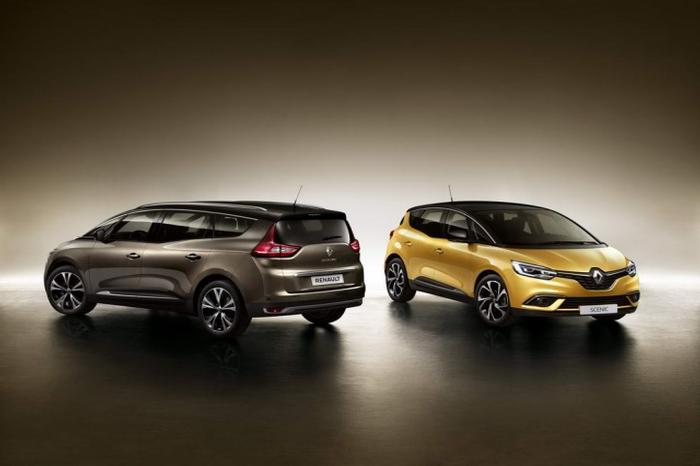2016 - 2022 Renault Scenic MPV Review

Used buying guide to the 2016-2022 Renault Scenic MPV.
Review
What’s it like?
Renault’s Scenic had long since divested itself of its Megane origins by the time the fourth-generation car came along in 2016, but even so people were taken aback by how good this iteration of Scenic (five-seat) and Grand Scenic (seven-seat extended wheelbase) was. The most talked about feature of the design is that every single version, regardless of specification, ran on 20-inch alloys with narrow tyres – something that could potentially ruin the ride quality, but which also preserved the Scenic’s desirable ‘concept car’ looks into its showroom format.
Even by the time it came along in 2016, consumers were moving away from the traditional people carrier format in favour of seven-seat SUVs. All of which only serves to make the Scenic IV an even more appealing prospect on the used-car market, where it’s a rival to the likes of the Citroen C4 Picasso/Grand Picasso, Ford S-Max, Opel Zafira, Toyota Verso and Volkswagen Touran.
Which model to go for?
First, you’ll have to decide if you need to seat five people within or seven. If the former, you want the shorter Scenic, which some would argue is also the better-looking MPV out of it and the stretched, seven-seat Grand Scenic.
Whichever one you go for, though, you end up with a highly versatile family machine. Both the Scenic and the Grand Scenic have interiors with individually sliding seats in the second row, while the boot space is excellent on both (though there’s not a lot of cargo capacity behind the third row of chairs in the Grand Scenic if they’re in use). And Renault put a lot of thought into the storage compartments and usefulness of various interior features, to make these MPVs as suitable for the rigours of family life as possible.
Engines throughout the Scenic/Grand Scenic’s life were an array of smooth, cultured yet modest turbocharged petrol and diesel units. There were 115hp 1.2-litre and 140hp 1.3-litre TCe petrol options throughout the model cycle, while the diesels originally began with the long-serving 110hp 1.5 dCi, with the 1.6 dCi sitting above it. This had 130hp as a manual or 160hp as an EDC automatic, a transmission choice offered on the later 1.7-litre dCi turbodiesel (with 120- or 150hp) which joined the range midway through the model’s production run.
The three most common engines on our used market are the 110hp dCi 1.5, the 120 dCi 1.7 and then the 140 TCe 1.3 petrol, all of which drive the front wheels and give decent fuel economy. To drive, the Renault MPV focuses on comfort over handling acuity, although those 20-inch wheels do have a minor negative impact on the way the vehicle soaks up lumps and bumps. Nevertheless, the Scenic doesn’t ride appreciably worse than contemporary SUVs of the time, so it’s a perfectly fine day-to-day car.
Does anything go wrong?
Although Renault historically doesn’t have the greatest reputation for reliability, the Scenic IV and its Grand Scenic spin-off used tried and tested Renault-Nissan Alliance engines, which aren’t known for any serious problems. As an MPV, the Scenic will likely have had a hard life if it was used for its primary family transportation purpose, so you’re basically watching for excessive signs of wear and tear in the cabin and on the bodywork – or, most notably, for signs of kerbing on those massive 20-inch alloys.
Renault issued six recalls for this generation of Scenic/Grand Scenic over its lifetime, which were for a faulty fuel line, a problem with the NOx sensors, the possibility of stress damage to capacitors on the vehicle’s electronics board, a potential failure of the LED control module for trailer lights, an incorrect mix of the inflation chemicals in the side-window airbags, and an odd flaw in which sound-deadening material could detach and unintentionally deactivate the Renault’s automatic handbrake.



